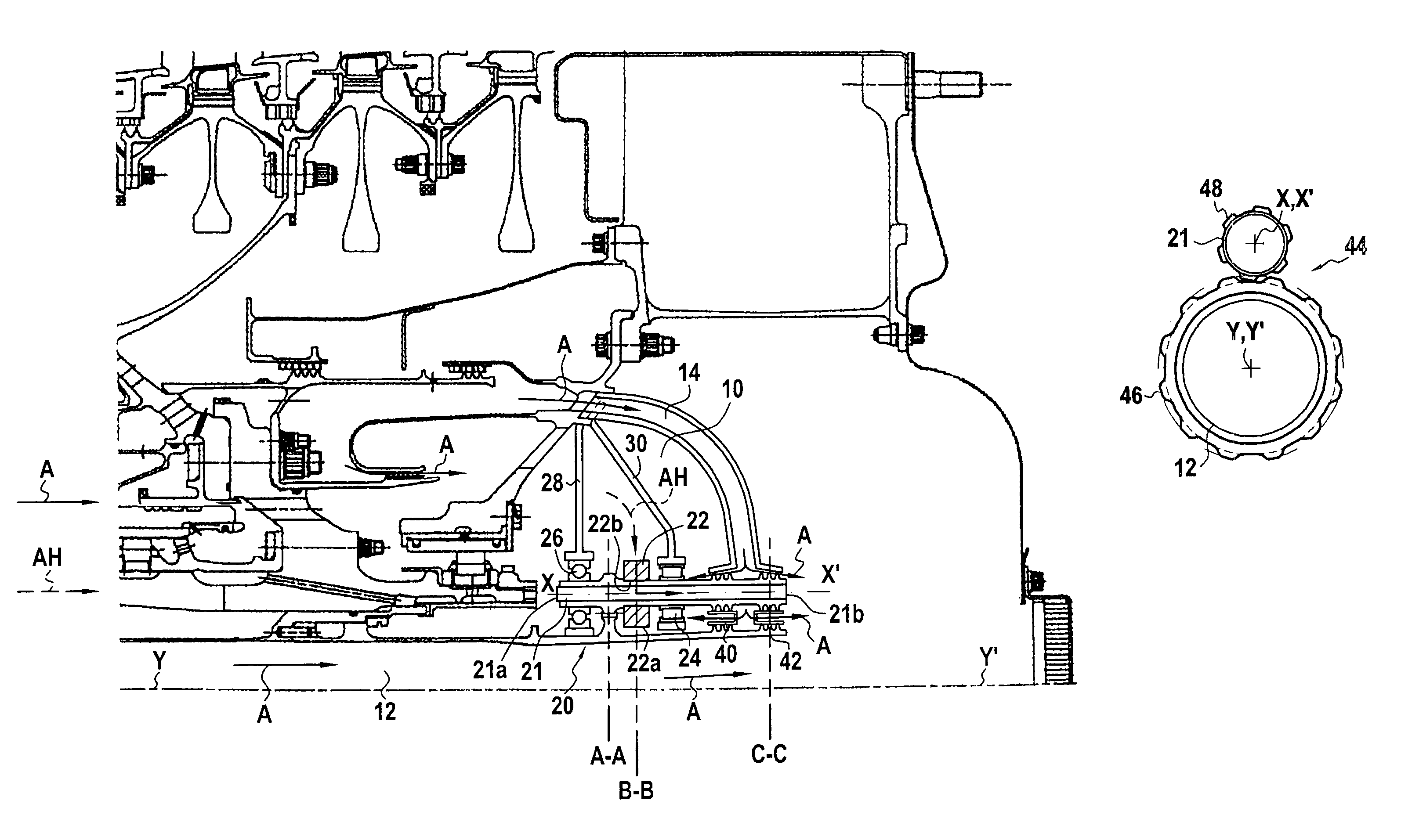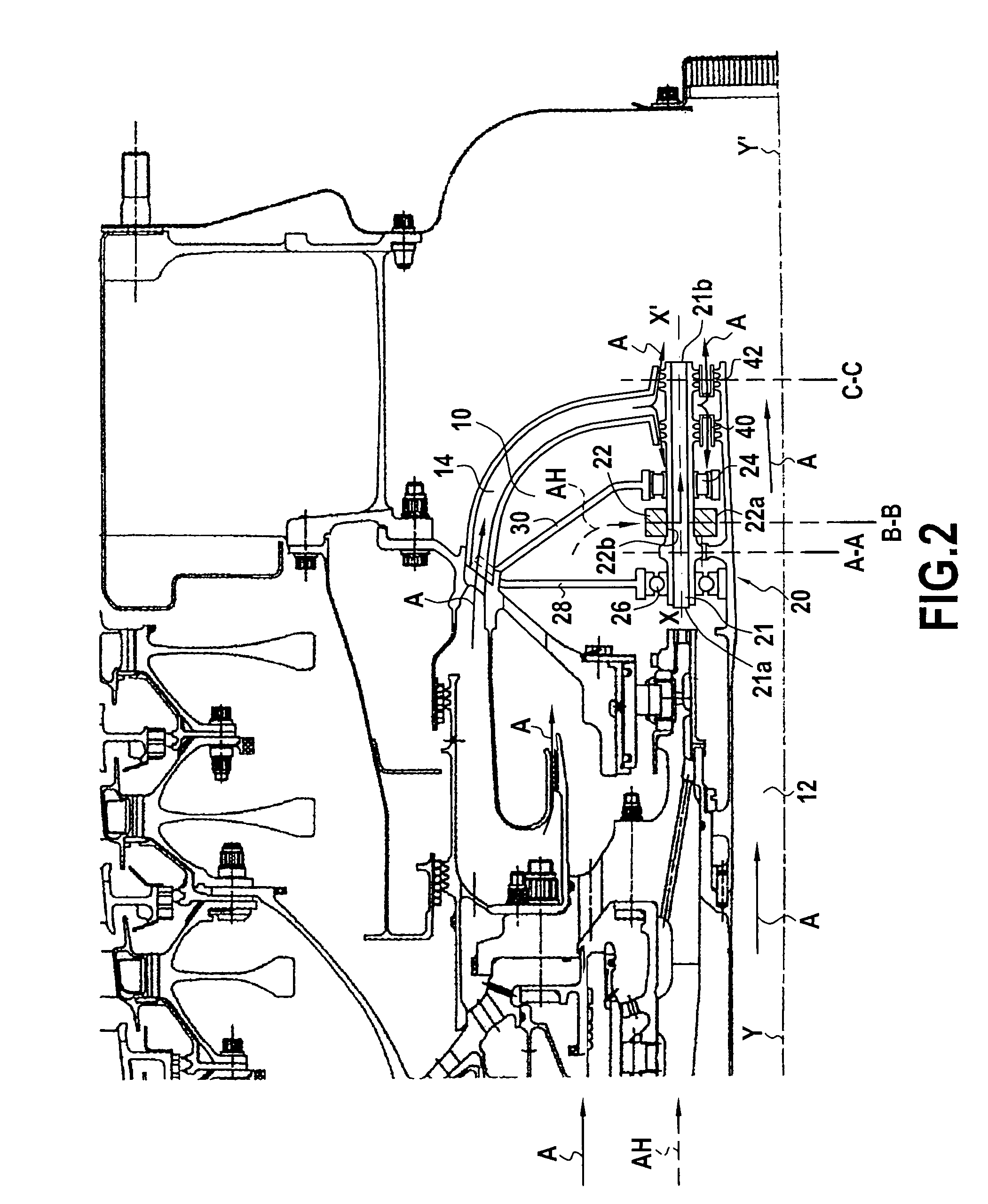De-oiler system for an aircraft engine
a technology of aircraft engine and oil tank, which is applied in the direction of machines/engines, mechanical equipment, separation processes, etc., can solve the problems of increasing oil consumption, and achieve the effect of improving the rate at which lubricating oil is recycled, without significantly complicating the structur
- Summary
- Abstract
- Description
- Claims
- Application Information
AI Technical Summary
Benefits of technology
Problems solved by technology
Method used
Image
Examples
Embodiment Construction
[0026]With reference to FIGS. 2, 3A, 3B, and 3C, there follows a description of the general organization of a de-oiler structure in accordance with the invention, mounted in the rear bearing enclosure 10 of an aircraft engine, or more precisely of a turbojet. In this figure, there can be seen once more not only the rear bearing enclosure 10, but also the hollow rotary shaft 12 coming from a front bearing enclosure, and air flow is represented by arrows A, while air-oil mixture flow is represented by arrows AH.
[0027]The de-oiler structure given overall reference 20 is essentially constituted by a hollow rotary axle 21 having an annular centrifugal de-oiler structure 22 mounted thereon. The hollow rotary axle 21 is preferably mounted in such a manner that its axis XX′ is parallel to the axis YY′ of the hollow rotary shaft 12. Nevertheless, these axes need not be mutually parallel. The hollow rotary axle 21 is mounted into two series of bearings 24 and 26, themselves mounted into suppo...
PUM
| Property | Measurement | Unit |
|---|---|---|
| volume | aaaaa | aaaaa |
| speed | aaaaa | aaaaa |
| annular shape | aaaaa | aaaaa |
Abstract
Description
Claims
Application Information
 Login to View More
Login to View More - R&D
- Intellectual Property
- Life Sciences
- Materials
- Tech Scout
- Unparalleled Data Quality
- Higher Quality Content
- 60% Fewer Hallucinations
Browse by: Latest US Patents, China's latest patents, Technical Efficacy Thesaurus, Application Domain, Technology Topic, Popular Technical Reports.
© 2025 PatSnap. All rights reserved.Legal|Privacy policy|Modern Slavery Act Transparency Statement|Sitemap|About US| Contact US: help@patsnap.com



